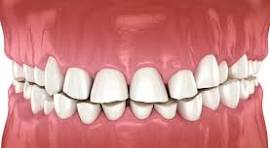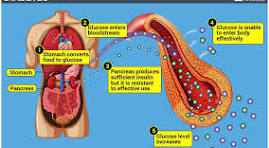INTRODUCTION
Health is wealth—a simple yet profound truth. Modern
medicine has made remarkable strides in diagnosing and treating diseases, many
health conditions continue to defy medical solutions, pushing us to explore
alternative approaches.
Natural remedies have been a cornerstone of healing for centuries, long before
the advent of modern pharmaceuticals. Across cultures and civilizations, people
have relied on nature’s gifts—herbs, roots, fruits, and holistic practices—to
restore health and vitality. While this encyclopedia does not seek to undermine
the importance of medical science, it aims to complement it by shedding light
on time-tested natural solutions. It encourages further research into the power of
nature in healing, offering insights into remedies that have provided relief to
countless individuals.
Natural Remedies For Athlete’s Foot
Athlete’s foot is a common fungal infection that affects the skin,
typically between the toes and on the soles of the feet. It thrives in
warm, moist environments, and while antifungal medications are often
used to treat it, natural remedies can provide relief and help support the
healing process. Consistency is key with these treatments, and they
should be used alongside good foot hygiene practices to avoid
recurrence. Always consult with a healthcare provider if symptoms
persist or worsen.
1. Tea Tree Oil:
How it works: Tea tree oil is renowned for its antifungal and
antiseptic properties. It can help eliminate the fungi causing
athlete’s foot while soothing the skin.
Preparation: Dilute a few drops of tea tree oil in a carrier oil like
coconut or olive oil to avoid skin irritation. Apply this mixture to
the affected areas 2-3 times a day.
Where to find: Tea tree oil is available in health food stores or
online.
2. Apple Cider Vinegar (ACV):
How it works: The acidic nature of ACV creates an inhospitable
environment for fungal growth. It also helps reduce itching and
inflammation in the affected area.
Preparation: Mix equal parts of ACV and water in a basin. Soak
your feet in the solution for 15–20 minutes daily. Ensure that your
feet are completely dry after soaking.
Where to find: Raw, unfiltered ACV can be found in most
grocery stores and local markets.
3. Garlic:
How it works: Garlic contains the antifungal compound allicin,
which helps fight off fungal infections like athlete’s foot.
Preparation: Crush a few garlic cloves and mix them with olive
oil to form a paste. Apply the paste to the affected area and leave
it for 30 minutes before rinsing.
Where to find: Garlic is widely available in local markets or can
be grown at home.
4. Baking Soda:
How it works: Baking soda helps neutralize the pH of the skin,
making it less conducive to fungal growth.
Preparation: Mix baking soda with a small amount of water to
form a paste. Apply the paste to the affected areas and let it sit for
15–20 minutes before rinsing off.
Where to find: Baking soda is a common household item, easily
available in grocery stores.
5. Cornstarch or Talcum Powder:
How it works: Cornstarch and talcum powder help absorb excess
moisture, keeping the feet dry and preventing fungal growth.
Preparation: Dust the powder over your dry feet and between
the toes every day to prevent moisture buildup.
Where to find: Both cornstarch and talcum powder are readily
available in most local markets.
6. Epsom Salt Soak:
How it works: Epsom salt is known for its soothing properties,
helping relieve itching and reducing inflammation while
softening the skin for easier treatment.
Preparation: Dissolve 1/2 cup of Epsom salt in a basin of warm
water. Soak your feet for 15–20 minutes daily.
Where to find: Epsom salt can be found at most drugstores and
local markets.
7. Probiotics:
How it works: Probiotics can help restore the balance of good
bacteria in the body, supporting the immune system in fighting
fungal infections.
Usage: Consume probiotic-rich foods like yogurt or take
supplements as directed on the label.
Where to find: Probiotic supplements and yogurt are commonly
available in grocery stores and health food stores.
Key Consideration
While natural remedies like tea tree oil, garlic, and apple cider vinegar
can help manage the symptoms of athlete’s foot, they may take time to
show results. It is essential to maintain proper foot hygiene—washing
feet daily, drying them thoroughly, and avoiding damp environments.
Additionally, if the infection persists, worsens, or spreads, it’s
important to consult with a healthcare provider or dermatologist for
professional evaluation and treatment. Natural treatments should
complement, not replace, prescribed medications if required.
Consistency is critical for these remedies to be effective, so daily
application is advised for the best results.



